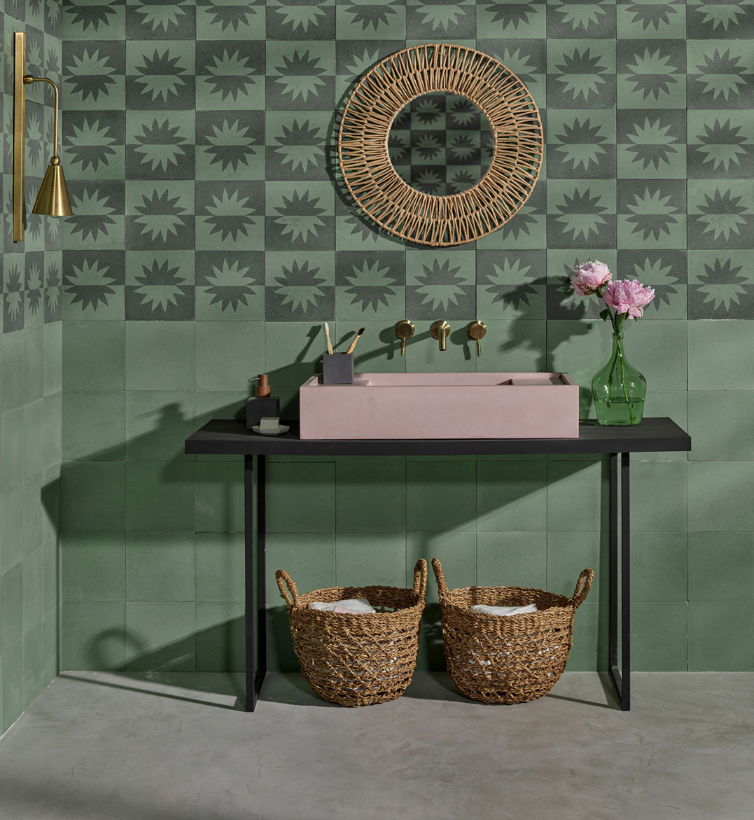- Close Menu

Ready to discover what your tile choices reveal about you?
Your tile style is more than decor—it’s a reflection of your habits, values, and creative spirit. Whether you gravitate toward bold geometric mosaics or classic subway tiles, each selection signals something unique about your personality.
By decoding these patterns, you’ll gain insight into how you approach design, comfort, and even risk in daily life.
Let’s delve into six common tile styles and what they say about who you are.

Tile layering means more than applying a single tile directly to drywall or concrete; it’s a systemized buildup of layers—waterproof membrane, backer board or foam underlayment, and multiple tile profiles. You might start with a solid porcelain base, add a textured stone mosaic inset, then finish with a thin decorative trim. Each layer serves a purpose: structural support, moisture protection, or visual accent. This multi-tiered approach demands precise planning so that every component aligns in thickness and bonding requirements. Ultimately, tile layering unlocks three-dimensionality that flat installations simply can’t match.
One of the biggest draws of tile layering is the ability to mix textures—glossy glass with honed marble, or raw slate with polished porcelain—to create tactile variation. By stacking tiles of varying thicknesses and finishes, you build shadows and highlights that change with light and perspective. This interplay of depth adds sophistication even in monochrome schemes, transforming a simple shower wall or kitchen backsplash into a living piece of art. Layering also allows for inset niches, accent bands, and floating shelves framed by contrasting tile edges. The result is a surface that invites touch and discovery.
Tile layering empowers you to blend colors and patterns without resorting to chaotic mixes. Designers often use a muted base tile—think large-format neutral porcelain—then layer a narrow strip of patterned encaustic or geometric mosaic at eye level. Above that, a slim metal or glass trim bridges into a second field tile, perhaps in a complementary shade. This orchestrated sequence guides the eye smoothly across the wall, preventing visual overload while still delivering striking contrast. Layering offers controlled bursts of color and motif, ensuring harmony in even the boldest installations.
Beyond aesthetics, tile layering enhances performance. A waterproof membrane beneath the first tile layer safeguards walls and floors from moisture intrusion—critical in showers and wet rooms. Underlayment systems with acoustic foam can reduce sound transmission between floors, useful in multi-story condos or hotels. Thermal layers, such as heated-mat systems under tile, offer radiant warmth underfoot when combined with proper thinset and grout. Each layer contributes to durability, comfort, and longevity, making tile layering a holistic design solution, not just a decorative trick.
Successful tile layering hinges on meticulous substrate prep and material coordination. First, verify that your substrate—whether cement board or plywood—meets manufacturer specifications for load and moisture resistance. Apply thinset or mortar in precise thicknesses, using leveling clips or shims to maintain consistent grout joints across layers. When mixing tile profiles, confirm that combined thicknesses align flush with surrounding surfaces to avoid tripping hazards or awkward transitions. Finally, choose grout and sealants compatible with all tile materials to ensure cohesive performance. Proper sequencing and attention to tolerances guarantee a flawless, layered finish.
Tile layering involves stacking substrates and multiple tile types to achieve depth, texture, and performance beyond single-layer installations.
Designers favor tile layering because it delivers multi-dimensional surfaces, enhanced waterproofing, and seamless integration of accent tiles.
Yes—tile layering lets you embed patterned mosaics or colored trim between base tiles, producing controlled bursts of color in neutral interiors.
Absolutely—tile layering enhances visual depth on walls and adds acoustic or thermal benefits underfoot when designed with appropriate underlayments.
Use matching trim tiles or bullnose edges at the boundaries, ensuring the total thickness aligns flush with adjacent walls or flooring.
Otto Tiles & Design LLC
7612 NE 4th Ct, Miami, FL 33138, United States
Phone: (786) 460 9098
Email: info@ottotiles.com
© 2025, Otto Tiles & Design LLC, All rights reserved